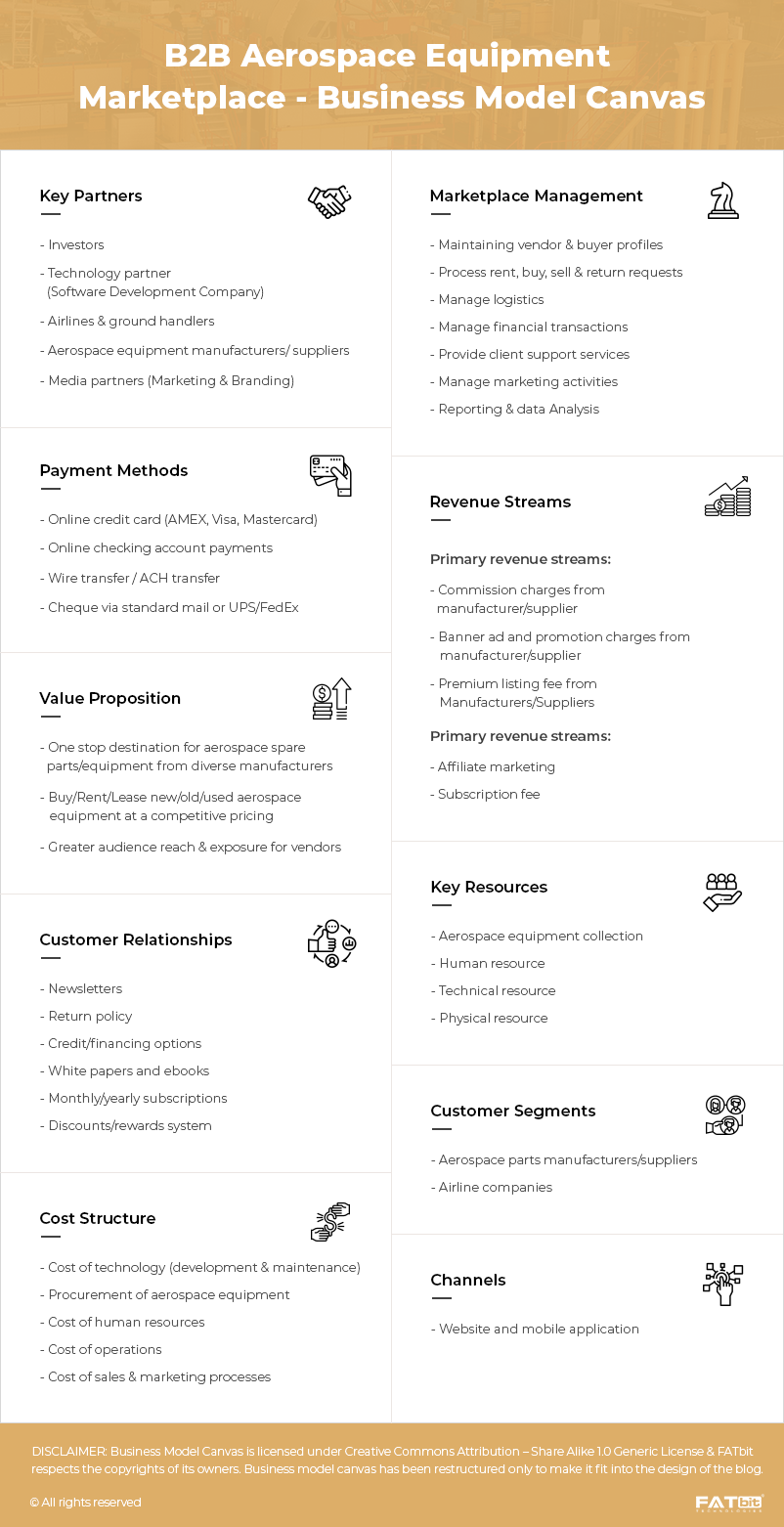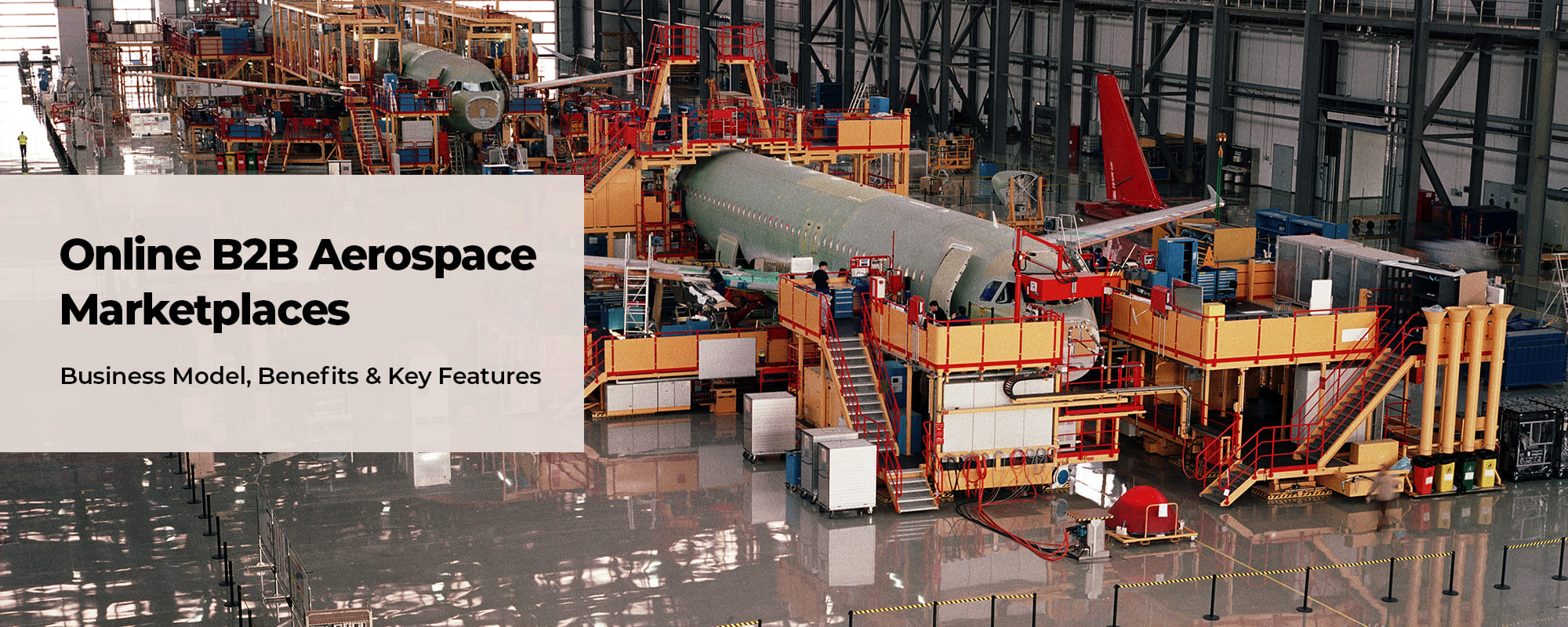Digital marketplaces, especially the business-to-consumer (B2C), have enjoyed a sparkling run of success in the past decade. For many people around the world, online purchase is now the norm; the industry that was valued at $3.53 trillion in 2019 is now projected to grow up to $6.54 trillion by 2022. While this has proven enough to convince most retailers to turn to online product sales, the more traditional business to business (B2B) industries have kept their distance from the many aspects of this rapidly evolving technology.
Missed Opportunities & No Clear Winner
As per the research conducted by Frost and Sullivan, this aversion originates partly from the lack of knowledge about the technology and partly from its misinterpreted benefits. These confusions often mean many missed opportunities for both businesses and customers. The market for aerospace parts makes for a perfect case study here.
The aviation maintenance, repair, and overhaul (MRO) market is expected to reach $116 billion by 2029, up from $81.9 billion in 2019. The aerospace industry is highly competitive but it hasn’t fully adopted the online marketplace model. Most of the buy/sell transactions still take place via emails or telephones. For websites that do offer some form of basic parts listing, lack of transparent pricing, key details, and images remains a major concern.
Buyers searching for avionics, auxiliary power units, and other aerospace products still need to do everything manually. That includes calling different companies, waiting days or weeks to get a quote and risk a purchase from a company that may not have the inventory in stock immediately.
How Do B2B Aerospace Marketplaces Operate?
Online B2B aerospace marketplaces can be best described as self-service, digitally sourced environments that allow multiple vendors to offer their products to business customers. As well as simplifying the product and supplier search, these marketplaces enable faster and more transparent transactions resulting in elevated customer experience.
While buyers benefit from increased choice, value and efficiency, sellers gain access to a large pool of buyers without any marketing overheads. With marketplaces, sellers no longer have to worry about dedicated sales, fulfillment or logistics functions. Reporting and data analysis are some of the other noteworthy benefits of marketplaces.
Implications of B2B Aerospace Marketplaces
Let’s take a closer look at how proper implementation of B2B marketplaces in the supply chain logistics of aerospace distributors can bring about improvements in inventory accuracy, shipping efficiency, and customer satisfaction.
1. Price Transparency & Scale Benefits
A typical passenger aircraft usually contains around 3 million different parts and there could be thousands of different manufacturers that produce these parts for regular maintenance. As one might expect, the global supply chain of the aerospace industry is a confusing rigmarole and that’s exactly where B2B aerospace online marketplaces come to the rescue. They provide a true digital ecosystem that connects customers with all the aftermarket products and services needed for aircraft maintenance.
Right off the bat, price transparency gives buyers great awareness of different supplier options and also spurs competition among suppliers. Through B2B marketplaces, buyers can also look to replicate the scale advantages they have come to negotiate with sellers through spot purchases via traditional channels. Finally, marketplaces allow buyers to consolidate their vendor rosters.
2. Faster Throughputs & Cheaper Delivery
Aircrafts zip through the skies at a lightning pace but the process of making them ready for that flight is far from zippy. Customers in the B2B aerospace industry often keep a piece of paper in their back pockets with a list of dozens of different websites with usernames and passwords to find the needed spare part. Quite evidently, the process is time-consuming and not suited for situations where parts need to be procured quickly to make an aircraft ‘flight-ready’ on short-notice.
Contrast that with an online marketplace, where spare parts for all the different aircrafts can be found easily in one place. Moreover, much like B2C websites, online B2B marketplaces can offer faster throughput times on the back of their advanced IT and logistics capabilities. Marketplaces’ greater scale also means customers can get far better shipping rates than what they might negotiate through traditional channels.
3. Accurate Inventory Figures
The inventory accuracy is greatly improved with the involvement of online marketplaces in the aerospace supply-chain. With sales and order tracking methods, distributors can be informed about low stock-levels and predictions for future demand, which can eliminate the issue of excess products.
Customers also benefit from marketplaces in the form of streamline and in-control purchasing experience. Through accurate inventory levels comes an immediate improvement in product arrival estimates and a subsequent drop in order cancellations and backorder notifications. Moreover, online marketplaces can enable suppliers to share real-time warehouse stock levels and projected restock dates and figures with their customers. This way, the supply chain logistics are vastly improved in every sector of the aerospace industry.
4. Parts Arrival & Up to Minute Shipping Information
In a B2B marketplace, customers can be communicated up to the minute shipping information, including updates related to weather delays or other disruptions. Moreover, with accurate inventory figures, aircraft parts can be stored in locations closer to regular customers, which evidently reduces the shipping time and cost to the customers. This way, marketplaces prove pivotal for aerospace distributors in meeting and exceeding customer expectations.
5. Integration into Source To Pay Processes (S2P)
Marketplaces’ ability to tap into companies’ source to pay processes is arguably their biggest benefit for aerospace businesses. By integrating with customers’ third-party purchase systems marketplaces are able to automate, digitize and simplify the sourcing process. With integration, purchase orders can be verified for proper pricing and quantity. Finally, integration can help in simplifying inventory, contract management, and streamline reporting and tracking.
Features To Have in an Online B2B Aerospace Marketplace
It’s quite a simple concept, buyers visit marketplaces with high-quality vendors. But high-quality vendors have their own set of expectations to join a marketplace. First off, they need to be sure that a marketplace has the potential to attract a large pool of buyers. Next, vendors are quite interested in seeing the overall user-experience that a marketplace has to offer. Here, user experience doesn’t simply relate to the offerings and the range of products but virtually the entire experience spanning from marketplace’s interactiveness, shopping experience, to utility and the ease of use.
Detailed Product Offerings – Customers should be able to view detailed product information and technical specs that prove helpful in product comparison and subsequent purchase.
Transparent Pricing – This should facilitate customers to compare prices, negotiate more effectively and make smarter purchases.
Ordering & Fulfillment – This includes customer’s order history, favorite lists and various other preferences. As well as being convenient for the customers this data provides vendors and marketplaces valuable insights to enhance customer experience.
Financial Services – These could include financing options for buyers, insurance and tax management facilities for sellers.
Payment Options – There should be plenty of payment methods available on the marketplaces. Moreover, to establish a true global reach there should be a choice of currencies for payment.
Quality Logistics – This should include negotiated shipping rates better than what the majority of vendors can offer on their own. Fast and cost-effective logistics with a high level of tracking capabilities are key to stay competitive.
Returns & Refunds – Prompt processing of return/refund requests through payment and logistics systems.
Recent Trends & News from the Aerospace Industry
Aerospace parts market has seen a rapid increase in the number of B2B marketplaces over the past few years. Following are some businesses that have made news in this segment with the launch of their eCommerce platforms.
ePlane, an online B2B marketplace for aerospace parts and repair services, recently acquired a new funding round of $9 million, taking its total funding tally to $16.5 million.
Satair, a global supplier of aircraft parts, solutions and services, has launched a third-party marketplace to help customers find the spare parts they need in one place. This will allow the company to multiply its parts catalog by 6 times without investing in a new inventory.
Skeyos, a B2B online marketplace for maintenance, repair and overhaul(MRO) of aircraft parts partnered with b2b-aero.com, a robust online database and Electronic Data Interchange(EDI) service provider, in a bid to expand its global network in the aviation MRO market.
Dart Aerospace, a privately held aerospace company that offers aftermarket products, aeronautical accessories, spare parts, and MRO facilities also launched its eCommerce site globally. The company has made this move to make it easier for clients to shop for any aircraft parts online with a 24/7 availability.
Honeywell Aerospace, a company that specializes in making and maintaining a range of aircraft parts went the online route with the launch of its aviation portal called GoDirectTrade.com. Notably, the company is deploying blockchain technology to give each listing quality documents and images for the exact part being offered for sale.

Closing Thoughts
It’s fair to say that the future of B2B aerospace is looking increasingly digital. We’ve already seen a number of leading businesses adopt the eCommerce model. The eCommerce technology’s proven benefits and a buyer mindset greatly influenced by the B2C eCommerce-experiences have played a major role in bringing about this transformation.
While selling remains the key focus for most Aerospace parts and MRO service providers, it’s worth noting that a variety of equipment might be demanded on rental by buyers. In such cases, a B2B marketplace enabled with the functionality of rental can prove highly beneficial. Hope the information shared in this blog proves useful to you. Feel free to share your views or queries in the comments section below.
Get Consultation to Setup Your B2B Aerospace Equipment Marketplace



